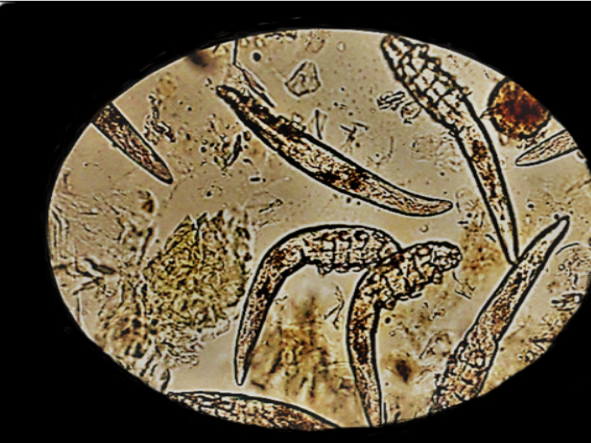Prevalence of ectoparasites in dogs and comparative efficacy of treatment regimes against mites
Keywords:
Amitraz, deltamethrin, demodex canis, ectoparasites, ivermectin, prevalenceAbstract
The objectives of this study were (1) to assess the prevalence of ectoparasites in dogs, and (2) to evaluate the comparative efficacy of the different treatment regimens against mites in dogs. The study was carried out at Jangsa Animal Saving Trust (JAST) dog shelter and laboratory analysis was done at National Centre for Animal Health, Serbithang. A total of 100 dogs of different ages and sex housed at JAST were included in the study and screened for ectoparasites. Three types of arthropod ectoparasites (ticks, fleas and mites) were detected. All of the dogs were infested with atleast one species of ectoparasites. Mixed ectoparasite infestation with two or more ectoparasites was higher (82%) than single infestation (18%). The most common combination was (fleas and mites) (52%). There was no significant difference (p>.05) in the prevalence of ectoparasites in relation to gender, age and body condition score. The assessment of efficacy of treatment was carried out based on examination of reduction of mites but fleas and ticks were not considered due to low intensity. A total of 60 clinical cases of dogs infested with Demodex along with ticks or fleas were divided into four groups with 15 animals in each group. Group A was considered as the control without providing any treatment whereas Group B, C and D were treated externally with amitraz (12.5%) and deltamethrin (12.5%) and ivermectin at 0.1 mg/kg SC respectively at their recommended dose at weekly intervals for 4 consecutive weeks. The Wilcoxon Signed Ranks Test showed that the reduction in the mite count for amitraz and ivermectin group before the start of the trial and after completion of the trial was statistically significant (p<.05) while there is no significant difference in deltamethrin (p>.05) and control group (p>.05). Treatment with amitraz revealed 60% of recovery rate and ivermectin treatment showed 53.33% followed by deltamethrin 46.67%. Compared to other groups, the rate of reduction of mite counts as well as clinical recovery rate was also faster in amitraz Group. This study revealed that amitraz has comparable efficacy against mite infestation in dogs (Amitraz > Ivermectin > Deltamethrin). Therefore, amitraz treatment protocol can be adopted for treating demodex mite infestation in dogs.

Downloads
Published
License
Copyright (c) 2022 Bhutan Journal of Animal Science

This work is licensed under a Creative Commons Attribution 4.0 International License.





